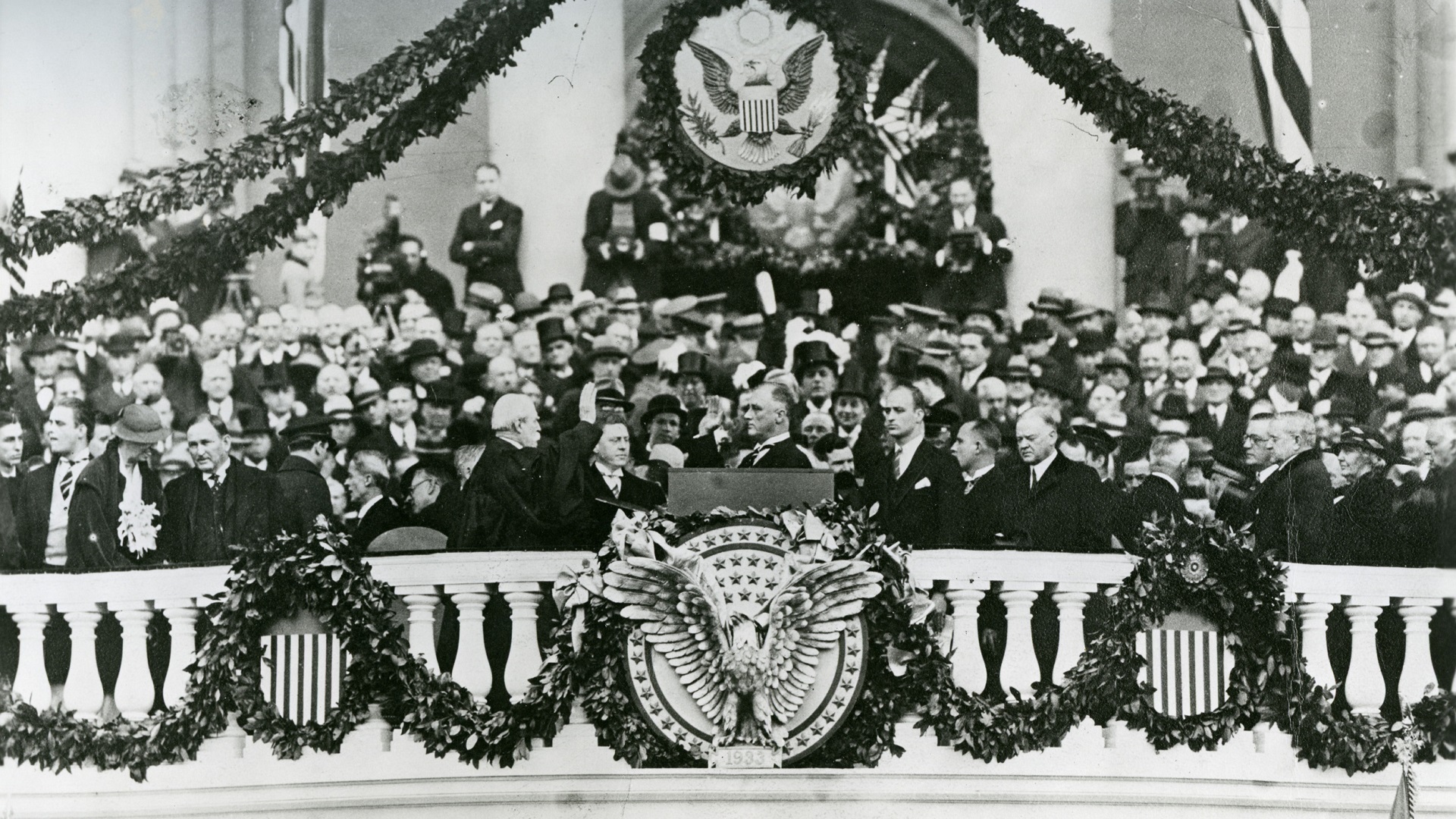The 60th quadrennial presidential election in the United States is in five weeks, a little more than a month away. As the campaign season is heating up, let’s take a look at the election of 1932, which set up the Democratic domination of the White House for five consecutive terms, four of which under the same president, Franklin Delano Roosevelt.
In our last article about historical US presidential elections, we described how explosively well the American economy was doing in the 1920s. Boy, things can change fast.
However, the famous Black Tuesday crash did not happen under Calvin Coolidge’s watch. He made as clear as possible to the press that he would not be seeking a second full term—he even gave out written notes saying ‘I do not choose to run for President in nineteen twenty eight [sic!]’ to reporters at a press briefing.
And he kept his word. Instead, his Secretary of Commerce Herbert Hoover got the Republican nomination. Hoover had an amazing life story which made him very popular among the American public. He grew up an orphan, but through his sheer talent and dedication, he made a fortune for himself in the mining industry by the age of 40. What’s more, he used a considerable chunk of his wealth for humanitarian causes, most famously to help the distraught civilians in war-torn Europe during World War I.
Hoover had no trouble defeating the Democratic nominee, New York Governor Al Smith from the Democratic Party. He was the first Roman Catholic to be nominated for President by a major party, angering the Ku Klux Klan, which was a major influence on the Democrats at the time. This further hurt Smith’s already slim electoral chances.
One of the major differences between the two candidates’ platform was their stance on prohibition. Hoover was a ‘dry,’ meaning pro-prohibition, which he remained throughout his time in office. Meanwhile, Smith was a ‘wet,’ meaning he opposed the prohibition of alcohol.
That did not matter much in the 1928 election, which Hoover won comfortably with 444 electoral votes. The trouble started once President Hoover got into office. It culminated on one very specific date: 29 October 1929, known as Black Tuesday, when the Dow Jones Industrial Average dropped 12 per cent, the largest one-day sell-off in American stock trading until 1987. Much of the rapid stock market growth was just a bubble in previous years, with people buying into the market at prices that fundamentals did not warrant.
The Great Depression - 5 Minute History Lesson
To clarify, Hitler was NOT the founder of the Nazi party, sorry for any confusion! The Great Depression was the worst economic downturn of the industrialized world, crippling the wealth of Americans throughout the 1930's. How did it happen? Let's find out with a 5 Minute History Lesson.
This resulted in a slew of bankruptcies, the most impactful were those of banks. Since bank deposits were not FDIC-insured at the time, the bank failures wiped out the life savings of millions of families across the US. The FDIC insurance up to $250,000 was actually introduced in 1933, as a response to these very events. While there were periods of brief recoveries in the stock market, they did not last long. In all four years of Herbert Hoover’s presidency, the Dow ended the year with a loss.
Unemployment skyrocketed, and peaked as high as 25 per cent in 1933. Many people lost their homes and were forced to live in make-shift tents in slums, which were nicknamed ‘Hoovervilles’. This makes it very clear who the people blamed for the economic catastrophe.
President Hoover tried to divert the blame to the previous administration. However, since he too was part of it as Secretary of Commerce, it evidently did not do much. When he did try to do something more productive, it backfired. In 1930, he signed into law the Smoot–Hawley Tariff Act, a protectionist measure which raised tariff rates. It prompted other nations to impose retaliatory tariffs of their own. As a result, US exports and imports dropped 67 per cent, which only worsened the Great Depression. Today, historians view the 1930 Tariff Act as one of the worst pieces of legislation ever passed by the US Congress.
'In all four years of Herbert Hoover’s presidency, the Dow ended the year with a loss'
Despite all this, Herbert Hoover still decided to run for reelection—not that any Republican was clambering for the nomination. He faced off against another Governor of New York, Franklin Delano Roosevelt on the Democratic side.
He was the fifth cousin of the popular former President Theodore Roosevelt, so his name had a special ring to it among American voters to begin with. Interestingly, he was more closely related to the older President Roosevelt through marriage, as he married his niece. First Lady Elanor Roosevelt’s maiden name was also Roosevelt…
In addition, FDR had appeared on the 1920 Democratic presidential ticket as well as the Vice Presidential nominee, alongside James Cox, but they lost to Warren Harding at the time.
Evidently, the Democrats emphasized economic messages in their official party platform, blaming the ‘unprecedented economic and social distress’ on the incumbent Republican Party. It worked, with the only surprise being that Herbert Hoover somehow managed to avoid total annihilation. Under these circumstances, President Hoover picked up a respectable 59 electoral votes and 39.6 per cent of the popular vote. Franklin Roosevelt carried the remaining 472 electoral votes, along with 57.4 per cent of the popular vote. It is also important to note that the Republicans avoided losing two thirds of the Senate, thus Democrats did not have a constitutional supermajority—yet. That did end up happening after all after the 1934 midterm elections.
Since the 22nd amendment was not in place yet, and Presidents serving two terms was only a tradition and not law, this marked the beginning of the only four-term Presidency in the United States’ history. Franklin D. Roosevelt had a lot to do in his 12 years in office (he died early into his fourth term): he had to deal with the greatest economic depression in history, and then, another World War.
Related articles:








